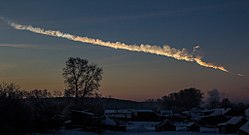This article needs to be updated.(August 2015) |
 | |
| Mission type | Ultraviolet astronomy |
|---|---|
| Operator | JAXA |
| COSPAR ID | 2013-049A |
| SATCAT no. | 39253 |
| Website | www |
| Mission duration | ~1 year planned (science phase) 11 years, 8 months and 12 days (achieved) |
| Spacecraft properties | |
| Bus | NEXTAR NX-300L |
| Manufacturer | NEC |
| Launch mass | 348 kg (767 lb) |
| Dimensions | 4×1×1 m (13.1×3.3×3.3 ft) |
| Power | 900 watts |
| Start of mission | |
| Launch date | 14 September 2013, 05:00 UTC |
| Rocket | Epsilon |
| Launch site | Uchinoura |
| End of mission | |
| Disposal | Decommissioned [1] |
| Deactivated | 8 December 2023 |
| Orbital parameters | |
| Reference system | Geocentric |
| Regime | Low Earth |
| Semi-major axis | 7,431.52 kilometres (4,617.73 mi) [2] |
| Eccentricity | 0.0136807 [2] |
| Perigee altitude | 957.9 kilometres (595.2 mi) [2] |
| Apogee altitude | 1,161.8 kilometres (721.9 mi) [2] |
| Inclination | 29.72 degrees [2] |
| Period | 106.27 minutes [2] |
| Epoch | 23 January 2015, 18:21:14 UTC [2] |
Hisaki, also known as the Spectroscopic Planet Observatory for Recognition of Interaction of Atmosphere (SPRINT-A) was a Japanese ultraviolet astronomy satellite operated by the Japan Aerospace Exploration Agency (JAXA). The first mission of the Small Scientific Satellite program, [3] it was launched in September 2013 on the maiden flight of the Epsilon rocket. It was used for extreme ultraviolet observations of the Solar System planets.
Contents
Hisaki was decommissioned by deactivation on 8 December 2023. [1]


